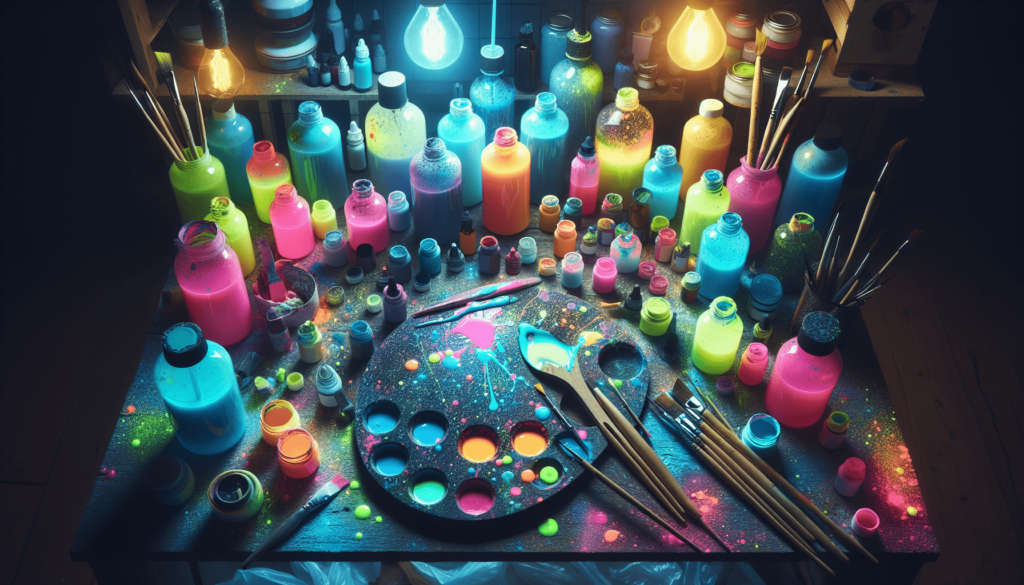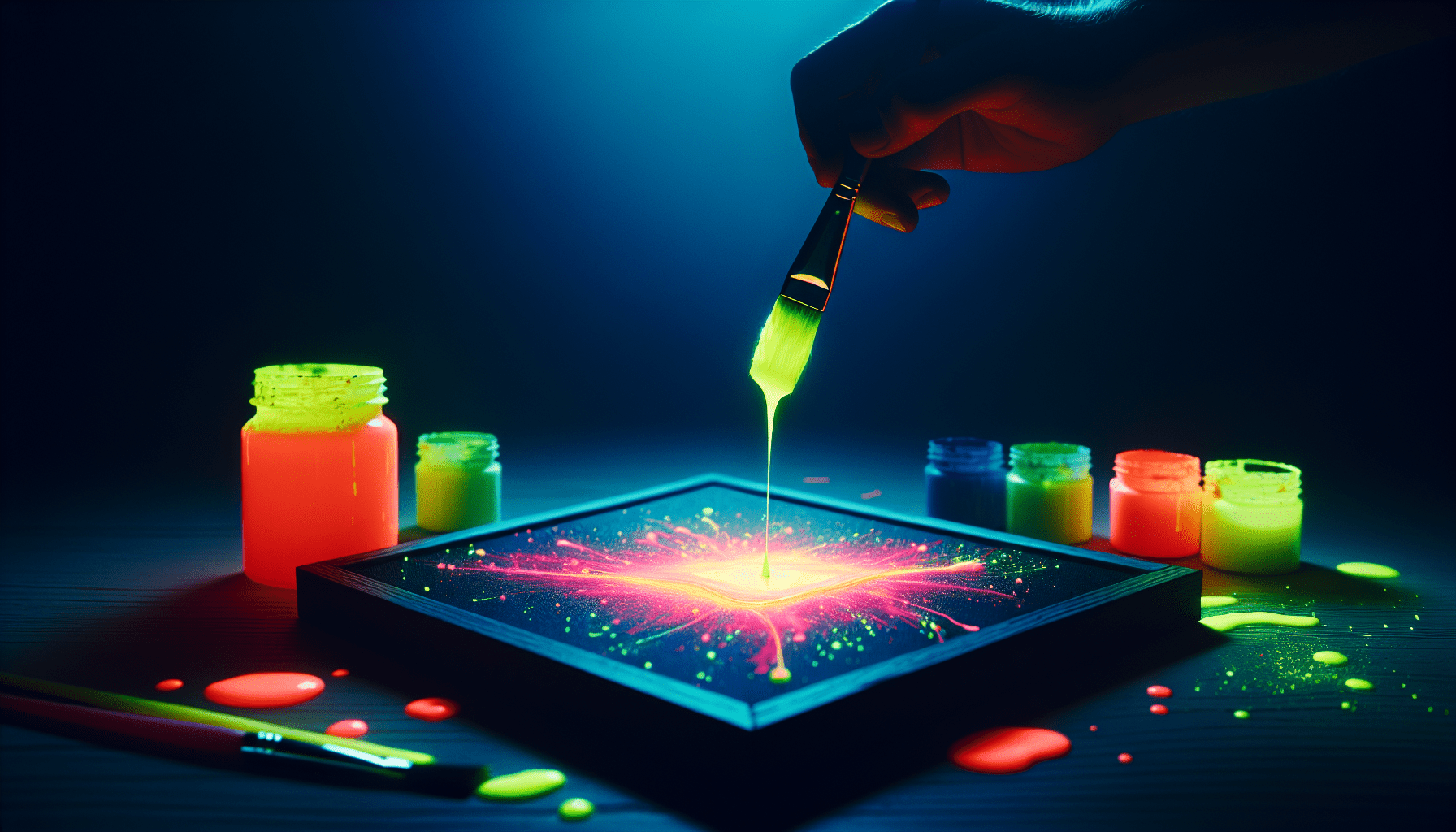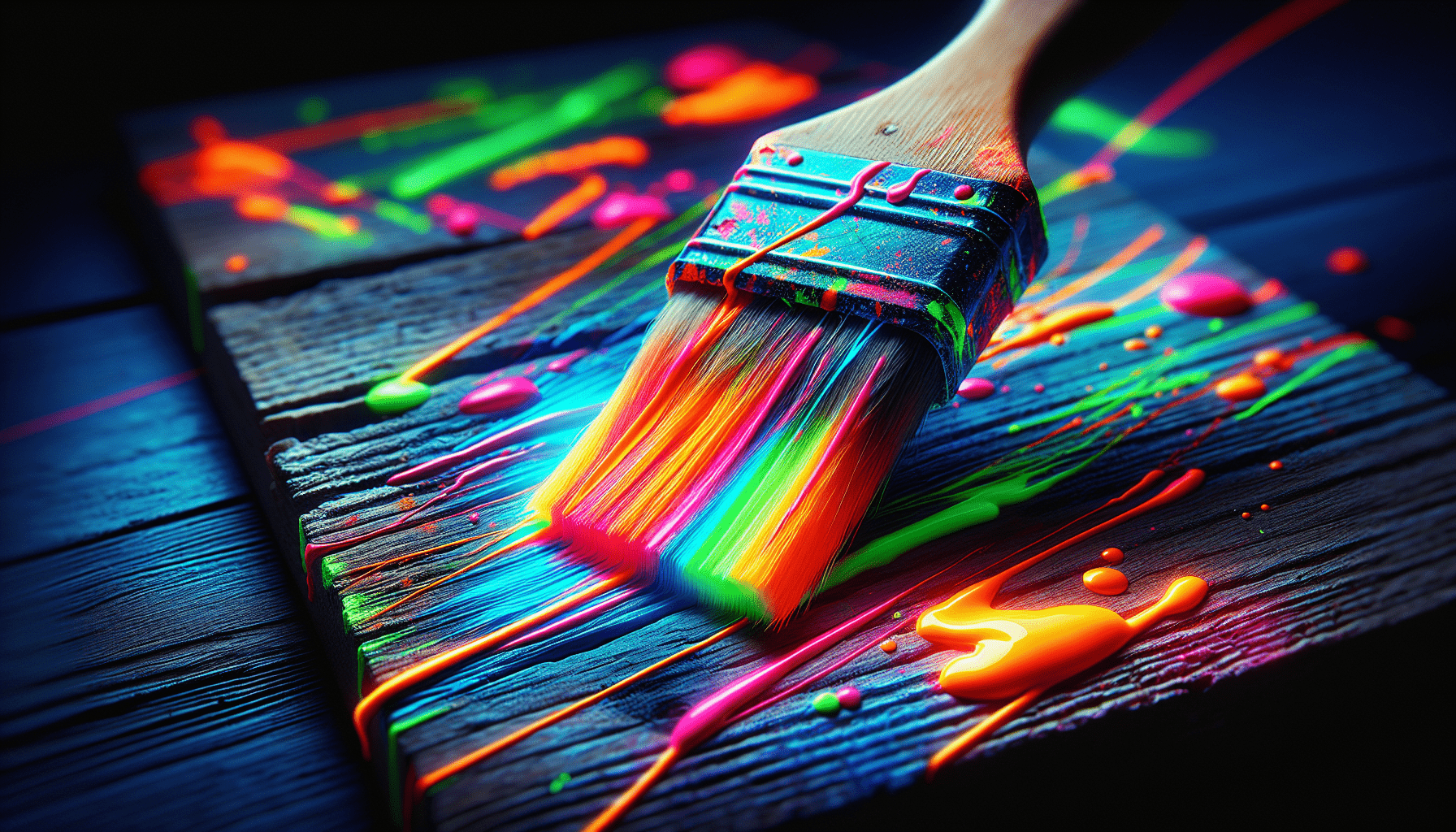fluorescent paint has become increasingly popular for various applications, whether it be for art projects, party decorations, or even safety purposes. In this article, you will discover a step-by-step guide on how to make your own fluorescent paint from scratch. By following these simple instructions and using easily accessible materials, you can create vibrant and eye-catching paint that will effortlessly add a glow to any project. So, if you’re ready to bring a burst of vividness to your creations, let’s dive into the fascinating world of creating fluorescent paint.

Choosing the Base Paint
When it comes to making fluorescent paint, selecting the right base paint is crucial. A white base paint is the most commonly used option for creating vibrant fluorescent colors. The reason behind this is that white acts as a blank canvas, allowing the fluorescent pigments to stand out and shine at their fullest potential. By choosing a white base paint, you ensure that the colors you create will be vivid and eye-catching.
Another option to consider when selecting a base paint is using a clear base paint. Clear base paints are transparent and do not have any tint, which makes them an excellent choice if you want to create transparent or translucent fluorescent colors. Clear base paints allow light to pass through, enhancing the fluorescent effect and creating a beautiful luminosity.
Choosing the Fluorescent Pigment
Selecting the right fluorescent pigment is also crucial in achieving the desired effect. When considering the color intensity, it is important to choose pigments that are highly fluorescent. These pigments contain compounds that absorb and emit light, resulting in bright and glowing colors. By opting for highly fluorescent pigments, you can ensure that your fluorescent paint will be vibrant and impactful.
In addition to considering color intensity, it is essential to choose a non-toxic fluorescent pigment. Safety should always be a top priority when working with chemicals and paints. Look for pigments that are labeled as non-toxic and safe for use in art and craft projects. This way, you can enjoy the process of creating fluorescent paint without worrying about any harmful effects.
Preparing the Materials
Before you start mixing the fluorescent pigment with the base paint, it is essential to gather all the necessary materials. You will need a white or clear base paint, fluorescent pigments, containers for mixing, stirrers or mixing sticks, and protective equipment such as gloves, goggles, and a mask.
Ensuring proper ventilation is also crucial during the paint-making process. Find a well-ventilated area or consider using a fan or open windows to keep the airflow consistent. This will help to disperse any fumes or odors that may be released during the mixing process, creating a safe and comfortable environment.
Mixing the Fluorescent Pigment with the Base Paint
To create fluorescent paint, start by pouring the desired amount of base paint into a clean container. If using a white base paint, make sure it is thoroughly mixed to ensure an even consistency. Next, add the fluorescent pigment gradually to the base paint. Start with a small amount and then gradually increase until you achieve the desired color intensity.
It is important to stir the mixture thoroughly to ensure that the pigment is evenly distributed throughout the base paint. Use a stirrer or a mixing stick and make sure to scrape the sides and bottom of the container to incorporate any pigment that may have settled. This will result in a well-mixed fluorescent paint that is ready to be tested and applied.

Testing the Fluorescence
Before applying the fluorescent paint to your desired surface, it is essential to test its fluorescence. Start by applying a small amount of the mixture on a surface, such as a piece of paper or cardboard. Observe the fluorescent effect under different lighting conditions. You may want to test it under natural light, blacklight, or other types of lighting to see how the paint reacts. This will give you a better understanding of the intensity and vibrancy of the color.
Adjusting the Color
If the fluorescent color is not as vibrant as desired, you can add more pigment to the mixture. Gradually incorporate small amounts of pigment at a time until the desired color intensity is achieved. Make sure to stir the paint thoroughly after each addition to ensure an even distribution of the pigment.
For those who want to create custom shades, mixing in other pigments can be a great option. By adding additional pigments such as acrylic paints or fluorescent pigments of different colors, you can create unique and personalized fluorescent shades. Experimentation is key in achieving the desired colors and effects.
Applying the Fluorescent Paint
When it comes to applying fluorescent paint, choosing the appropriate painting method is crucial. For larger surfaces, such as walls or canvas, using a brush or roller is recommended. These painting tools allow for an even application of the paint and ensure a smooth finish. Ensure that the paint is evenly spread and cover all areas uniformly to achieve a consistent look.
For more detailed work or smaller surfaces, using a small brush or sponge can provide better control and accuracy. This is particularly useful when creating intricate designs or highlighting specific areas. The smaller tools allow for precision and better coverage in tight spaces.
Drying and Sealing the Paint
Once you have applied the fluorescent paint, it is important to allow it to dry completely. The drying time may vary depending on factors such as the type of base paint used and the thickness of the paint layer. Follow the instructions provided by the manufacturer or allow sufficient time for the paint to dry thoroughly.
After the paint has dried, it is recommended to apply a clear sealer for added protection. The sealer helps to protect the fluorescent paint from scratches, fading, and other damage. Choose a sealer specifically designed for the type of surface you have painted, such as a clear acrylic sealer for acrylic paints. Apply the sealer according to the manufacturer’s instructions and allow it to dry completely before handling the painted surface.
Cleaning Up
Properly cleaning your brushes and tools after using fluorescent paint is essential to maintain their longevity and prevent any color contamination. Clean your brushes and tools with soap and water immediately after use. Avoid letting the paint dry on the bristles or surfaces of the tools, as it can be difficult to remove once dry. Rinse thoroughly until the water runs clear, and then gently reshape the brush bristles to their original shape. Dispose of any unused paint properly according to local regulations.
Safety Precautions
When working with fluorescent pigments and paints, it is essential to prioritize safety. Wear protective gloves, goggles, and a mask to prevent any contact with the skin, eyes, or inhalation of fumes. Fluorescent pigments may contain chemicals that can be harmful if not handled properly. Additionally, ensure that you work in a well-ventilated area to minimize any potential exposure to fumes or odors. By taking these safety precautions, you can enjoy the process of creating fluorescent paint while keeping yourself protected.



